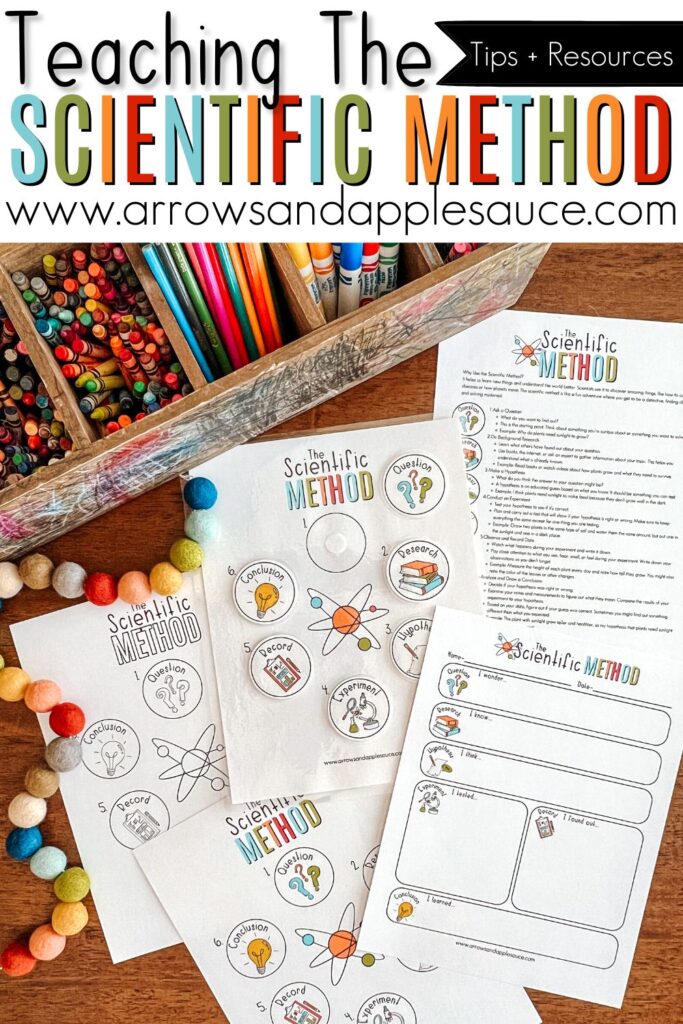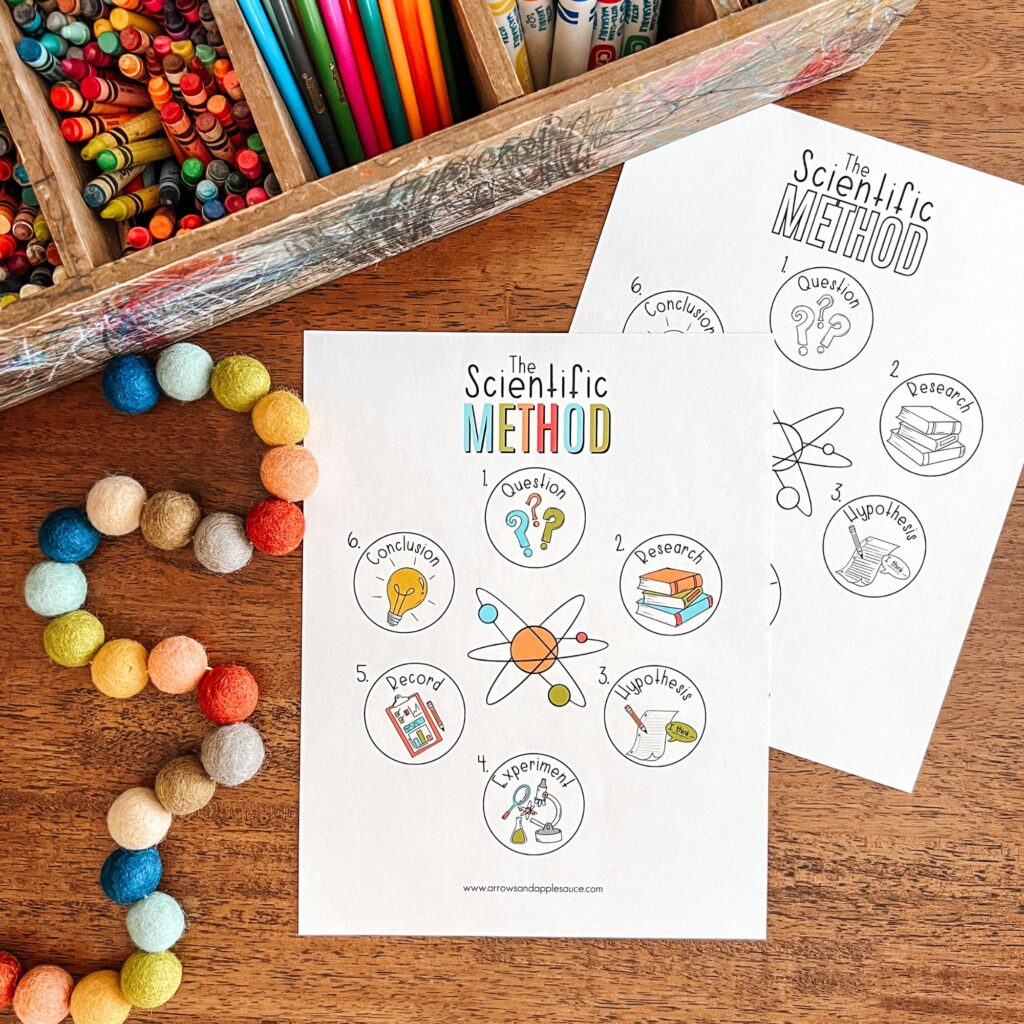This post contains affiliate links. If you follow one of my links I earn a small commission at no extra cost to you. All opinions are completely my own. Thank you for supporting my blog!
A few months back Squeaks got really into the “Zoey and Sassafras” book series. It follows a young girl named Zoey and her cat, Sassafras, as they use the scientific method to help magical creatures with various problems. Each story emphasizes the steps of the scientific method—asking questions, forming hypotheses, conducting experiments, and drawing conclusions—making science fun! Squeaks was immediately hooked, and before I knew it I had bags of bread around my house being “tested to see which environment grew the most mold”. I was equal parts grossed out and impressed. Suffice it to say, Squeak’s love of experiments has only grown and I’m leaning into it.
As Christian homeschool moms, we have a unique opportunity to shape our children’s education and worldview. Teaching them the scientific method can be an exciting and rewarding part of that journey. This method fosters curiosity and critical thinking and aligns beautifully with our faith, encouraging a deeper appreciation of God’s creation. Let’s explore some of the benefits of teaching the scientific method to kids and then I’ll provide practical tips to help you incorporate it into your homeschool curriculum.
Benefits of Teaching the Scientific Method
-
Fosters Curiosity and Wonder
The scientific method starts with a question. As they seek answers, kids begin to see the world through curious eyes, appreciating the complexity and beauty of God’s creation. This sense of wonder is the beginning of a lifelong love of learning.
-
Encourages Critical Thinking
Critical thinking is a vital skill in today’s world. The scientific method teaches kids to question assumptions, analyze data, and draw evidence-based conclusions. This process helps them develop logical reasoning skills essential for problem-solving in all areas of life.
-
Promotes Hands-On Learning
Kids often learn best through hands-on experiences. The scientific method involves experiments that require children to observe, measure, and interact with the physical world. This active learning engages multiple senses and makes abstract concepts more tangible and understandable.
-
Builds Patience and Perseverance
Experiments don’t always go as planned, and that’s okay! The scientific method teaches children that failure is a part of learning. This builds resilience, patience, and perseverance as they learn to troubleshoot problems and try again.
-
Integrates Faith and Science
Teaching the scientific method can reinforce your family’s faith by showing that science and Christianity are not in conflict. Exploring the natural world through science can deepen your children’s understanding of God’s creation and strengthen their belief in a purposeful and intelligent Creator.

Tips for Teaching the Scientific Method
-
Start with Simple Questions
Begin with questions that are easy for your children to understand and relate to. Examples include “Why do plants need water?” or “What makes a rainbow?” These questions can lead to simple experiments that illustrate the steps of the scientific method.
-
Use Everyday Materials
You don’t need a lab to teach the scientific method. Everyday items like baking soda, vinegar, plants, and magnets can be used for experiments. This makes science accessible and demonstrates that you can explore big ideas with simple tools.
-
Integrate with Bible Lessons
Connect science lessons with Bible stories and teachings. For example, when studying the creation story in Genesis, discuss how the scientific method helps us understand the processes God used to create the world. You can incorporate your rainbow experiments into a lesson on Noah’s ark. The ten plagues hold nearly endless inspiration for experimentation!
-
Use a guide like my Scientific Method Activity Set
This printable set helps walk kids through each step of the Scientific Method, and explains the process in detail. There’s even a fun and easy to use record page to keep track of your next science adventure!
Get your Scientific Method Activity Set here!
-
Incorporate Technology
Utilize educational apps and websites to supplement your lessons. There are many resources available that offer interactive experiments, virtual labs, and videos that explain scientific concepts in a fun and engaging way. YouTube can be a powerful tool!
-
Encourage Questions and Exploration
Foster an environment where questions are welcomed and exploration is encouraged. Let your children know that it’s okay not to have all the answers right away. The process of discovering and learning is valuable in itself.
-
Plan Field Trips
Whether with a co-op or just as a family, take field trips to science museums, planetariums, botanical gardens, and nature reserves. These outings can provide hands-on learning experiences and stimulate your children’s interest in science.
You might also enjoy reading this post: Plant + Animal Cell Anatomy Activities
A little experiment inspiration
Linked below are a few of our favorite books for feeding curiosity. These books have helped us chase rabbit trails and encouraged scientific experimentation on multiple occasions. I linked each to Amazon, but be sure to check your local library or favorite used book shop as well!

- Zoey and Sassafras series
- Faith and Science with Dr. Fizzlebop
- Outdoor Maker Lab
- Awesome Engineering Activities for Kids
- Real Outdoor Science Experiments
- 365 Science Activities
Teaching the scientific method to your children not only equips them with essential skills for their future but also enriches their faith by revealing the intricacy of God’s creation. By starting with simple questions, using everyday materials, integrating with Bible lessons, and encouraging curiosity, you can make science an exciting and integral part of your homeschool curriculum.



Leave a Reply